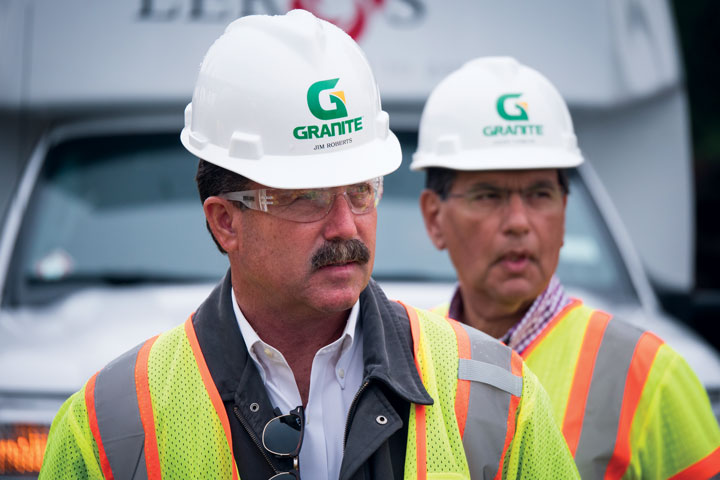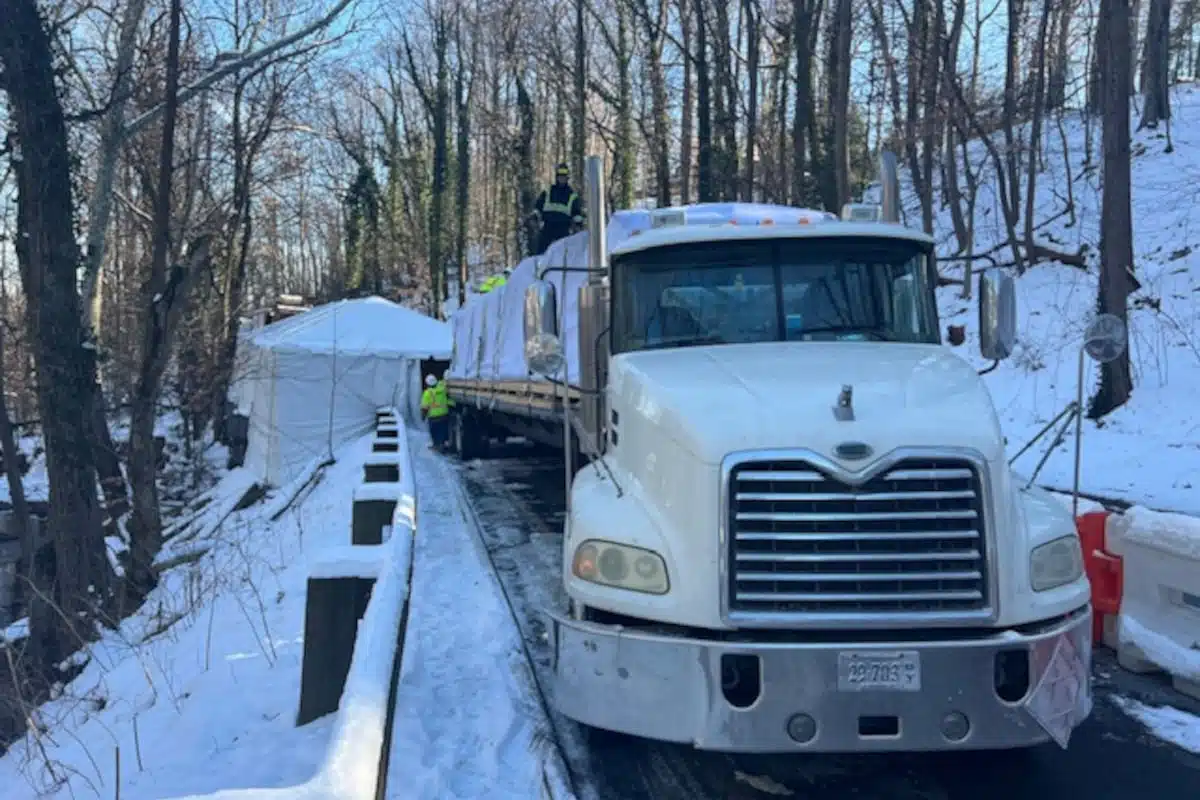
Granite Construction Emerges as Top Trenchless Player
Infrastructure Company Adds the Inliner and LiquiForce Brands to Stable of Companies
The trenchless rehab market landscape took an interesting turn in 2018, with a multi-billion dollar construction company taking a giant and strategic leap into the world of trenchless technology by purchasing two high-profile, North American manufacturers.
Granite Construction LLC — a $3.5 billion publicly traded, national infrastructure company — earlier this year acquired Canada-based, LiquiForce and U.S.-based Layne Christensen (former parent company of Layne Inliner). Together with Kenny Construction, which was added to the Granite family in 2012, they now form the Granite Inliner Division of Granite Construction.
Going forward, cured-in-place pipe (CIPP) mainstay Layne Inliner will now be known as Granite Inliner; LiquiForce will retain its name in Canada.
RELATED: Kenny Construction Capitalizes on Rehab Market Success
The acquisitions of publicly traded Layne Christensen (purchased for $565 million) and privately-owned LiquiForce (terms not disclosed) were announced in June and April, respectively. The acquisitions further position Granite as a national leader across both the transportation and water infrastructure markets; Going forward for Granite, as well as the three trenchless companies, all will now pursue a much wider geographic swath of the trenchless rehab market.
“Granite is very committed to growing the rehabilitation side and the water and wastewater side of its business,” says Granite Inliner vice president Denise McClanahan. “There is a more committed growth to diversify and take this company to the next level.” McClanahan had worked for Inliner for 16 years, coming in as a director of engineering. Today, she leads the Granite Inliner Division.

The Granite Inliner Division is led by Denise McClanahan, the first female to head up one of Granite’s operating groups. Here, she’s with (l-r) Ralph Bonanotte (Kenny Construction), Jeff Lewis (LiquiForce) and Mark Harris (Granite Inliner).
While LiquiForce’s inclusion in Granite’s portfolio shouldn’t be understated — the company adds critical market position into the laterals sector for Granite with its patented lateral lining process — combined with the Inliner brand takes Granite to an even stronger level in the water and wastewater infrastructure markets. Since 1989, the Inliner CIPP product has been used all over the world to protect, seal and renew more than 30 million ft of sanitary, storm and industrial process piping.
“Our evolution has been deliberate, geographically and market-wise,” says Granite president and CEO James Roberts. “Today, we are the No. 1 transportation contractor in the United States, as well as one of the top water infrastructure companies. We’ve diversified into all infrastructure markets and as we start to see infrastructure gearing up in the United States, our goal is to be positioned as a major player in most of the infrastructure markets in North America.”
With the addition of Granite Inliner and LiquiForce, Granite now has more than 7,000 employees across North and South America. CIPP will be at the foundation of the Granite Inliner Division, which is expected to generate approximately 10 percent of the overall company’s revenue. As far as future growth, Granite is not done with this market as additional acquisitions to further strengthen the group are currently being researched, Roberts says.
Background Story
Reynolds Inc. established its Inliner division in 1991 to meet the growing need to renew aging underground infrastructure in the United States. A few years later, Reynolds acquired CIPP company Inliner Technologies and its sister company Liner Products, a liner tube manufacturer.
RELATED: Layne Inliner Is Making 2012 an Exciting Year
Layne Christensen Co. acquired the entire Reynolds family of companies — Reynolds Inc., Reynolds Inliner, Inliner Technologies and Liner Products — in September 2005 for $112.5 million, a deal that doubled its business in the water and wastewater market. The deal kept the Inliner headquarters in Orleans, Indiana. After becoming part of the Layne Christensen family companies, Layne Inliner made acquisitions and partnerships of its own that have expanded its service offerings, as well as its geographic area.
Inliner remained a full-service rehab company with in-house capabilities for complete mainline and lateral structural renewal using the Janssen method, sliplining, traditional excavation and replacement, U-Liner fold-and-form, manhole renewal with cementitious and Raven epoxy products and other rehabilitation methods. The moves the company made reflected its philosophy to expand its reach across North America, with multiple offices and wetout facilities. The acquisitions increased its market share as a top trenchless rehabilitation/CIPP contractor. The contractor acquired American Water Services Underground Infrastructure Group, a major provider of CIPP services, in 2006. In 2011, Wildcat Civil Services, a CIPP pipe group operating in Colorado and Kansas that gave the company a footprint in the Rocky Mountain area, was acquired. The company’s most recent partnership with SAERTEX was finalized in 2011, adding the fiberglass and ultra-violet (UV) cure capabilities to its services.
Granite’s history began in 1900 as the Granite Rock Co, producing granite from Logan Quarry in Watsonville, California. The company became Granite Construction in 1922, focusing on small infrastructure projects in California. The company grew into two divisions and later started a Heavy Construction division. Today, Granite specializes in complex infrastructure projects, including transportation, pavement preservation, water and wastewater, commercial and residential, industrial, power, environmental, tunneling and federal contracting. The company went public in 1990 and continued to grow around the United States.
Today, although the Granite name may be new to those in trenchless circles, it’s been a part of the water and wastewater markets for more than 50 years. Among its well-known projects is construction of the California Aqueduct during the 1960s, as well as large diameter water pipelines. Trenchless was a new construction method for Granite and not something it actively looked at getting into when it added Kenny Construction in 2013 — it came as part of the deal.
“Kenny had a host of divisions — power, civil construction, tunnel and CIPP lining. Upon acquiring Kenny, we liked the CIPP business, but that wasn’t the sole reason we purchased Kenny [Construction,]” Roberts says.
Roberts says when Granite started looking at Kenny Construction, it liked its diversity of offerings. The acquisition was completed by January 2013, giving Granite its first real look at the CIPP process and trenchless rehab market. Recognizing the long-term growth potential of the trenchless market as infrastructure continued to age, Granite began looking at other trenchless companies to add to its mix. The deals for the Inliner and LiquiForce brands were in the works for more than a year.
“The opportunity to become a larger player in the [trenchless] sector was really important for us,” Roberts says. “Geographically, with LiquiForce’s presence in the northern part of the United States and southern Canada, we thought that was a great expansion opportunity for Granite. It also gave us the chance to move into the lateral market.”
The Inliner purchase was also a perfect addition to the Granite model because it gave both companies a far-reaching footprint across the United States. “The Layne acquisition brought the opportunity to geographically expand in the trenchless market. We love the [Inliner] name. we love the product. And we love the people,” Roberts says.
Granite’s Impact on Inliner
McClanahan had been a part of the trenchless industry for more than 16 years and her role in the new Granite Inliner is impactful for her, as well as the Granite family. Although Granite employs many female executives and maintains ongoing initiatives to try to attract more women and minorities into the field, McClanahan is the first female at Granite to lead one of its operating divisions. She will be closely working with Mark Harris (Inliner), Jeff Lewis (LiquiForce) and Ralph Bonanotte (Kenny Construction), among others. Her excitement over having Inliner join the Granite Construction family of companies, as well as earning the opportunity to lead the operating group, is easily heard in her voice as she discusses the impact the acquisitions has had and will have on the industry.
RELATED: Family, R&D at Centre of LiquiForce’s Continued Success
More reach. More support. More resources. “We’re literally combining it all and capitalizing on the best that comes from [Inliner, Kenny Construction and LiquiForce], she says. “We are combining that with the strength we already had and we are nesting it all under this new Granite Inliner group.”
“I had the privilege of seeing Inliner go from just over a $40 million business, incorporate two acquisitions and see through several product and process enhancements to get to where we were at the time of the merger,” McClanahan says. “My new role affords me the opportunity to lead the new group and work alongside [people] I truly respect as we grow, diversify and strive to take Inliner to yet another level.”
Roberts has been with Granite for 37 years, starting on the ground floor. A civil engineer, Roberts started his Granite career estimating work and becoming a superintendent in the field. He worked his way through the ranks before being named CEO in 2010. Though now the person in charge, he says he still considers himself a “field guy.”

Granite Construction president and CEO James Roberts is excited for Granite’s long-term success in trenchless technology with the recent additions of LiquiForce and Granite Inliner.
Roberts says Granite did not know a lot about the trenchless technology market when first introduced to it via the Kenny Construction acquisition. However, once a part of Granite, the company learned the value of having a trenchless technology company in the fold and its potential for long-term impact. Roberts talks about the enormity of the trenchless market, as well as the people involved in it. “I had no idea just how big [the trenchless industry] was and no idea how prevalent it was,” he says. “I’ve learned that there are some very, very talented and hard-working people who operate in a very intellectually challenging business. And it takes a tremendous amount of experience and talent to be effective in that business. I’ve seen that in most of the businesses we operate.”
Roberts is looking forward to what the Inliner and LiquiForce brands do for Granite and is open to exploring more trenchless companies to add. “We believe that the trenchless market is a good place for us to be,” he says. “I think the expansion opportunities, both organic and inorganic, are tremendous. Our strategic plan has water expansion as a key component of our overall strategic plan. Water is a significant portion of our strategy.”
RELATED: Merger Opens Layne to the Future
Roberts and McClanahan both see the trenchless market remaining strong for many years to come as our infrastructure continues to age and deteriorate at a faster rate than it is being renewed. “Products continue to evolve and adapt/develop to meet the market needs,” McClanahan says. “While the need remains strong, focus needs to be concentrated on finding sustainable funding sources and getting the commitment to not just be reactionary in the way problems are addressed but find ways to better plan so that a more proactive approach can come into play.”
Sharon M. Bueno is managing editor of Trenchless Technology.




